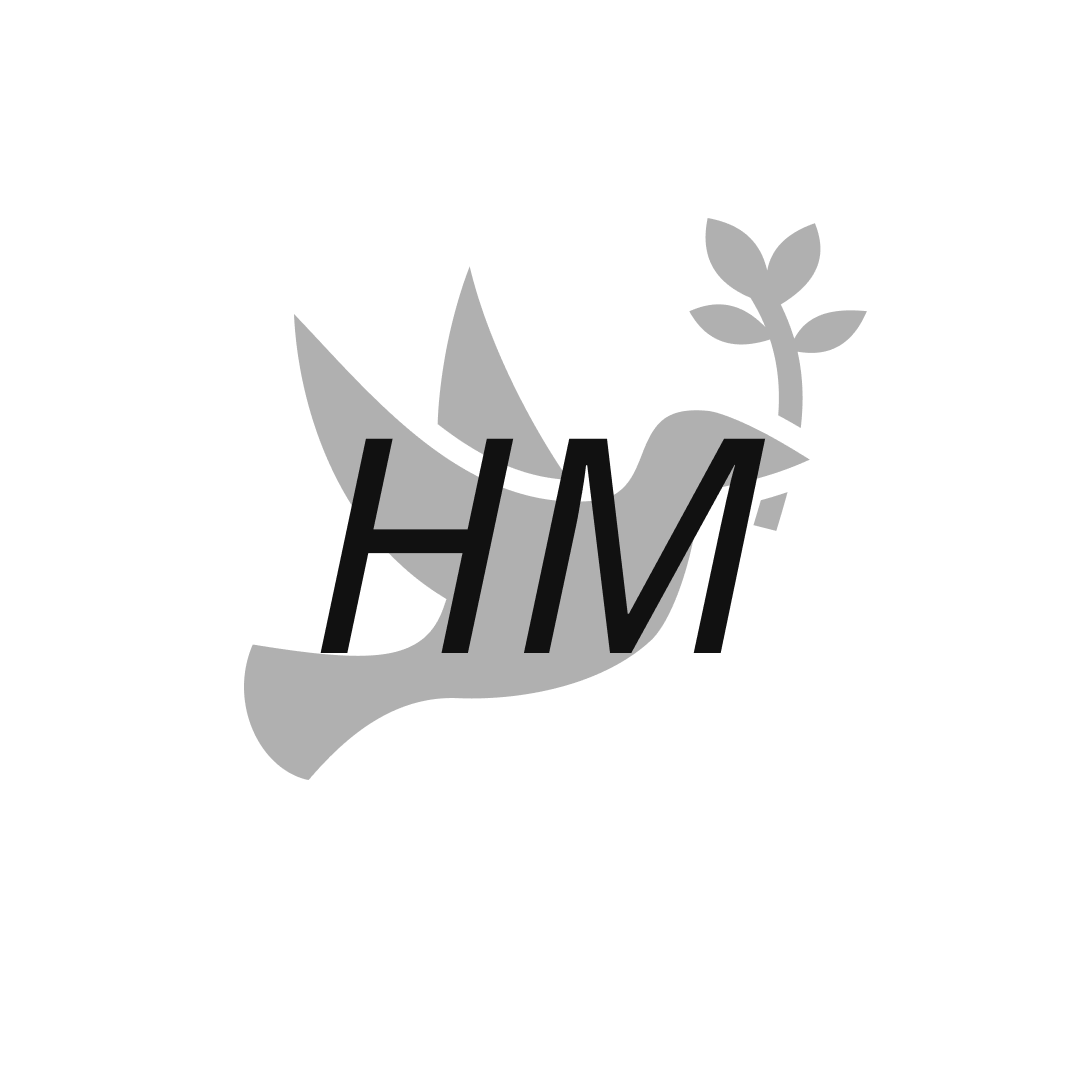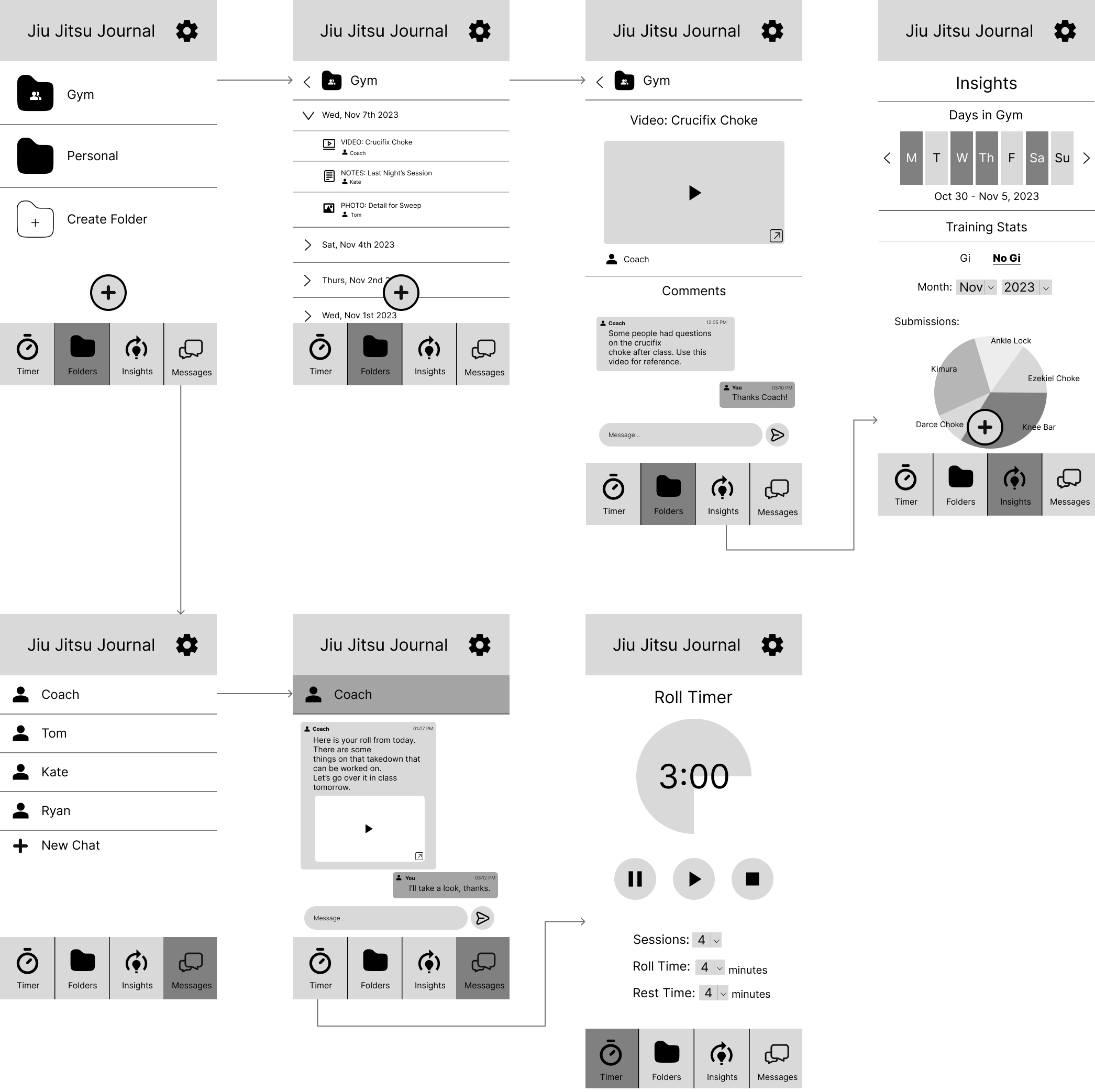Jiu Jitsu Journal (JJJ)
A mobile application created for Brazilian Jiu Jitsu practitioners to exchange information and view training insights.
My Role
UX Researcher, UI Designer
Methods
Competitive Audit, User Journey Map, Directed Storytelling, Wireframing, Interactive Prototyping, Usability Testing
Tools Used
Figma/Figjam, Miro, Notion, Google Suite
UX Process
Why Jiu Jitsu Journal?
Opportunity Space/Problem Statement
Many Jiu Jitsu enthusiasts struggle with forgetting techniques learned over time, leading to a reliance on instructors for clarification. Current solutions, such as personal notes or journals, lack a collaborative aspect and make it challenging to share insights with training partners.
Solution
Jiu Jitsu Journal is an app designed to address the challenge faced by Jiu Jitsu enthusiasts in recalling and retaining techniques learned during training sessions. The aim is to provide a centralized platform for users to log, share, and revisit Jiu-Jitsu techniques. The app promotes a social aspect by allowing users to save and share techniques with their training partners, fostering a sense of community and collaboration among practitioners.
Understanding User Needs
“I haven’t found any tools that work for me. I just write down things in my notes app”
Primary Users
Jiu-Jitsu Enthusiast:
Goals: Easily track and recall techniques, collaborate with training partners, spend more time training.
Impact of Solution: Efficiently reference learned techniques, foster a sense of community, and train more independently.
Jiu-Jitsu Instructor:
Goals: Share techniques, plan lessons effectively, understand what students are learning outside of class.
Impact of Solution: Streamline virtual teaching, simplify lesson planning, enhance communication with students.
Directed Storytelling
Through interview sessions with people who train and compete in Jiu Jitsu, many had similar frustrations. The challenges included injury, progress stagnation, limited mat time, and difficulty retaining techniques.
Their joys were also the same, the connection to people as well as the physical and mental challenge of training is what kept people in the sport.
Gap Detection
Competitive Audit
In exploring the landscape of existing apps, I noticed a surprising gap.
There are not many options for users to choose from and the ones that do exist don't quite hit the mark in terms of providing what people in the Jiu-Jitsu community really need.
This opens up an exciting opportunity for Jiu Jitsu Journal to step in and address these specific challenges in a way that others haven't quite nailed yet.
Cultivating Empathy
Persona - Gabe
Now let me introduce you to Gabe, he is a 28 year old young professional who has recently began training in jiu jitsu. It has helped him get in shape, meet new people, and challenge himself mentally. His goal is to earn a blue belt.
Recently, he has felt that his progress has been plateauing, likely because of him not having much time to train outside of class days.
When he does have free time, he has difficulty remembering techniques that were learned in the previous weeks and months.
User Journey Map
Here is an illustrative example of Gabe's journey, beginning with his frustration at experiencing a plateau in his growth and being unsure on where to direct his training efforts.
Intrigued by gym recommendations, Gabe downloads the app, customizes his insights, engages with instructional videos, and starts logging valuable feedback and training stats.
Reviewing his historical data, he identifies and addresses recurring issues, creating a more purposeful approach to training. Since witnessing his progress, Gabe now feels prepared to take the blue belt test.
Prototyping and Testing
Wireframing
I created low fidelity wireframes in order to understand the functional flow and user interactions within the app.
How can JJJ be improved?
Remote Usability Testing
I completed usability testing in order to get an understanding of pain points through navigating the prototyped application. I asked participants to complete tasks and observed as they did so, listening to their thoughts and feelings throughout the process.
Final Design
Start Pages
The user will be brought to these pages upon opening the app for the first time. They are prompted to choose which training insights they would like to track and receive historical data on.
This allows for user control and freedom as well as simplicity for later information input.
Shared Database
Users have the ability to create shared or personal folders. Within each of these folders, they can post video, photo, or written notes for later reference or sharing.
Users can also leave comments on posts within shared folders, which fosters collaboration among each other.
Messaging
Keeping the emotions of a positive gym community, the app allows users to message each other and share items privately as well.
This meets the user need of mutual support and fostering a sense of social identity.
Sport Specific Features
Jiu-Jitsu Journal enables users to document and store their training statistics, affording them a holistic view of their progress over time.
This feature allows them to review historical data, providing the user insights into the types of submissions encountered and executed during training sessions.
Reflection
Next Steps
In the future, I hope to make additions to the application that were requested throughout user testing, such as features to track sports injuries, a calendar format for folders to simplify navigation outside of a scroll, and resources for cutting weight for competitions.















